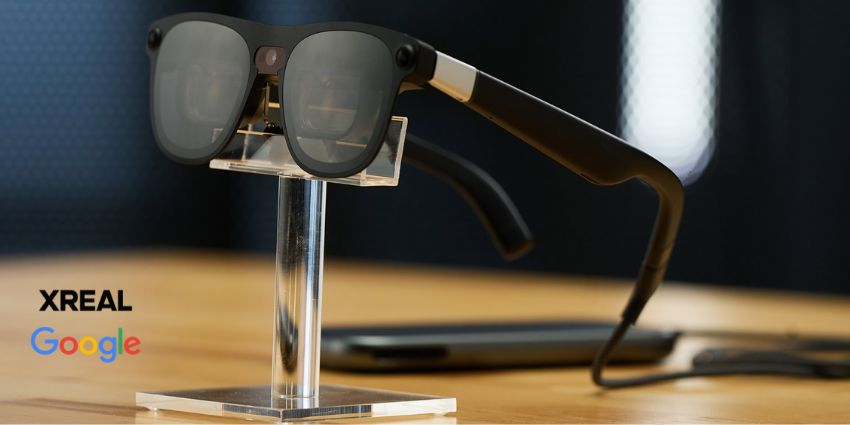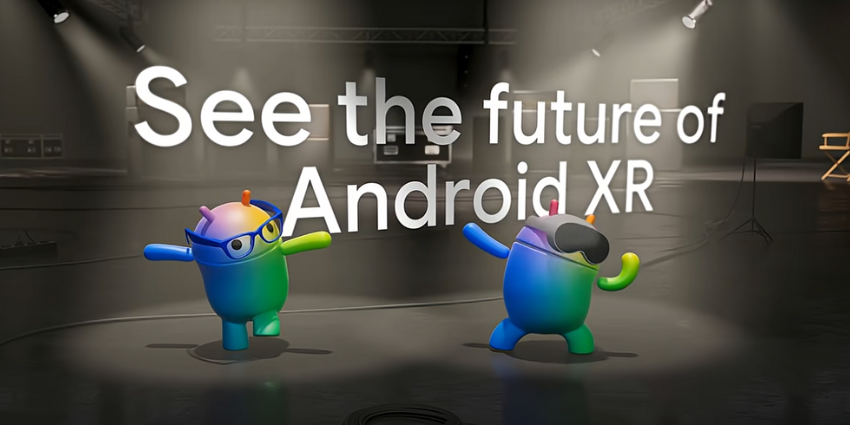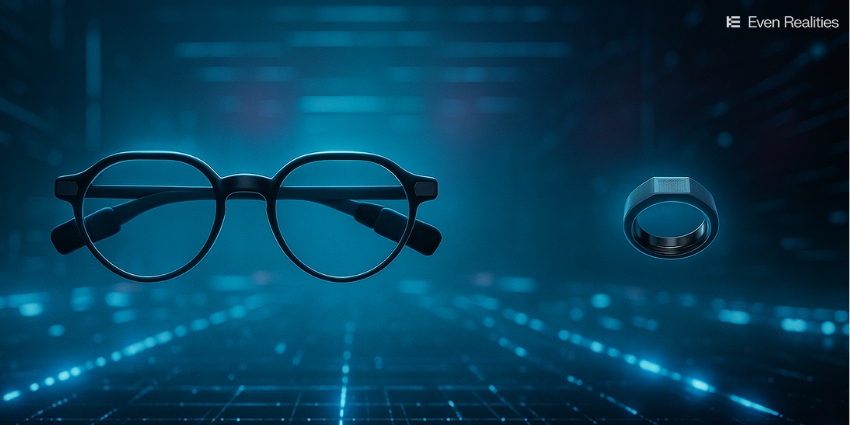As immersive technologies evolve, enterprises are eager to explore new ways to blend physical realities with virtual ones to power enriching experiences.
Holograms are an effective way to achieve this as they allow users to project 3D images on a physical surface and simulate virtual designs in real-world surroundings.
Holograms for enterprise use were popularized by Microsoft’s HoloLens, a mixed reality headset that allows holograms to overlay in a physical environment. Further cutting-edge holographic technologies allow people to interact with these projections and control virtual designs using gestures.
This opens up a world of value-generating possibilities across enterprise use cases like training, remote field services, and product design.
Defining Holograms
A hologram is defined as a physical structure resulting from the diffraction of light to create multiple wavefronts, which together assemble to create a 3D simulation of an object.
To the user, holograms appear as objects made of light and sound that look like digital images but support naturalized interactions like physical objects.
Holograms are created through a photographic technique called holography, which breaks down a digital image into multiple wavefronts, to be later reconstructed into a 3-dimensional form.
Holography can be traced back to the 1970s when the Hungarian-British physicist Dennis Gabor was awarded the Nobel prize for inventing the holographic method.
However, it was not used to create three-dimensional projections until recently, when the advent of augmented reality (AR) enabled the rise of their development.
How Does a Hologram Work?
Holography relies on four key components: the recorded object, a laser beam or light source, a recording medium to clarify the image, and an environment where the light beams will intersect to form the hologram.
For the hologram to work, the laser beam is split into multiple parts corresponding to the dimensions of the object being recorded. These beams are then passed through layers of diffraction and directed onto the recording medium, which intersects and clarifies the beams to create an imprint of the object being recorded, which is finally converged upon a flat environment. This is a traditional, mechanical way of creating holograms dating back to the 70s and 80s.
Today, holographic technology is much more advanced and uses digital enablers to record objects of greater complexity, project onto uneven and varied environments, and even generate holograms from digital files and designs.
This means that there does not need to be a corresponding real-world object for every hologram. It can be used to generate 3D projections of yet-to-be manufactured product designs, architectural designs, industrial layouts, equipment configurations, and much more.
The Rise of Next-Gen Holograms
Modern holograms have four unique characteristics that make them ideal for enterprise use:
- Projecting non-real objects – As mentioned, holograms can be used to simulate any visual image required by an organization. For instance, a healthcare training center can visualize parts of the human anatomy as holograms without the need for a physical model of those parts.
- Combining sound with visuals – Headsets that enable holograms, such as Microsoft HoloLens 2 or Holoboard, may include built-in speakers, which combine holographic images with corresponding audio elements to create a more immersive experience.
- Interacting with holograms – It is also possible to interact with modern holograms using prespecified gestures. For instance, you can tap the hologram of a ball generated by Microsoft HoloLens and have it bounce on the surface.
- Integrating with the real world – Holograms can be integrated with the real-world environment on which they are projected, using spatial anchoring techniques, to understand the dimensions of the world around them and project the image onto the right location, in context to its surrounding objects and environment.
Use Cases for Holograms and Holographic Technology
Some of the most important applications of holograms include:
-
Geographic intelligence – Holograms make it possible to record and present detailed information on geographic terrain. Users can not only view the location, but they can also visualize it in 3D and interact with the hologram using gestures. Geographic intelligence is highly relevant for industries like defense, mining, and aeronautics research.
-
Medicine and healthcare – Holograms make it possible to visualize the human anatomy in precise detail, which is extremely difficult with traditional visualizations. In addition to studying anatomy, holographic technology is also useful for simulating molecular structures in drug discovery processes.
-
Security and fraud prevention – The traditional mechanical method is widely applied for security and fraud prevention in the financial services sector. Credit cards around the world now use a simple hologram that changes colors when the card is tilted, making it easier to verify its authenticity.
-
Holograms as art – Holographic displays and art installations are now popular in museums, public spaces, and monuments, unlocking revenue-earning potential for the public sector and the art industry.
-
Telepresence and collaboration – This is an emerging use case, where collaboration providers aim to recreate human presence using holograms. For instance, a meeting participant can be converted into a hologram, and their 3D virtual image can be streamed to a different location. The other meeting participant would be able to see and interact with the person’s hologram, just like in real life.
Leading Companies Developing Holographic Technology
Several leading technology companies are researching holographic technology to develop comfortable and effective headsets that support holographic displays.
Meta, formerly Facebook, announced that it was working on holographic optics that would be used to create a thin and lightweight VR headset, vastly different from the bulky headsets in use today while being equally powerful.
Microsoft is an established player in the hologram and mixed reality space, enabling real-world interactions with holograms through HoloLens 2 and the upcoming HoloLens 3. Google is also working on Project Starline that would recreate meeting participants as 3D images, just like holograms.
Apart from this, there are companies like Looking Glass Factory, IMVERSE, and HYPERVSN that provide a wide range of solutions in this space. Led by these companies, digital holography is a growing market, valued at $2.7 billion in 2020 and expected to reach $5.4 billion by 2024.







